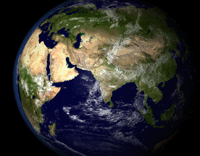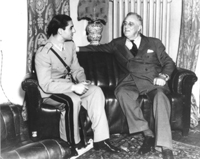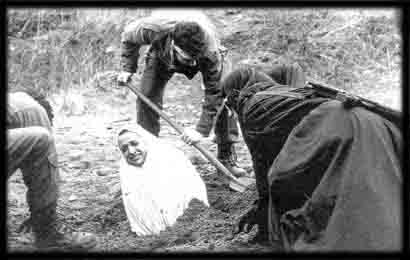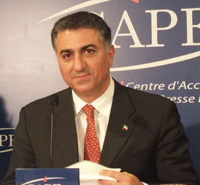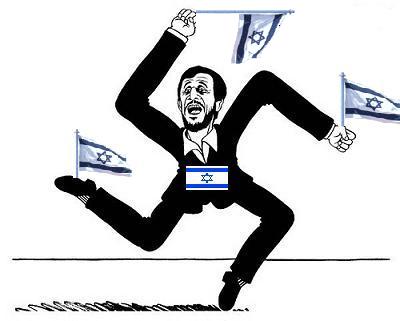

Background
Known as Persia until 1935, Iran became an Islamic republic in 1979 after the ruling shah was forced into exile. Conservative clerical forces established a theocratic system of government with ultimate political authority vested in a learned religious scholar. A group of Iranian students seized the US Embassy in Tehran on 4 November 1979 and held it until 20 January 1981. During 1980-88, Iran fought a bloody, indecisive war with Iraq over disputed territory. Over the past decade, popular dissatisfaction with the government, driven by demographic changes, restrictive social policies, and poor economic conditions, has been pressuring for political reform.
Area
Total
: 1.648 Million Sq KM
Land : 1.636 Million Sq KM
Water: 12,000 Sq KM
Natural Resources
petroleum, natural gas, coal, chromium, copper, iron ore, lead, manganese, zinc, sulfur
People
Population:
69,018,924 (July 2004 est.)
Age Structure:
0-14 years: 28% (male 9,935,527; female
9,411,647)
15-64 years: 67.2% (male 23,608,621; female
22,744,128)
65 years and over: 4.8% (male 1,645,246;
female 1,673,755) (2004 est.)
Population Growth: 1.07% (2004 est.)
Birth Rate: 17.1 births/1,000 population (2004
est.)
Death Rate: 5.53 deaths/1,000 population (2004
est.)
Sex Ration:
at birth: 1.05 male(s)/female
under 15 years: 1.06 male(s)/female
15-64 years: 1.04 male(s)/female
65 years and over: 0.98 male(s)/female
total population: 1.04 male(s)/female (2004
est.)
Life Expectancy:
total population: 69.66 years
male: 68.31 years
female: 71.07 years (2004 est.)
Ethnic Group:
Persian 51%
Azeri 24%
Gilaki and Mazandarani 8%
Kurd 7%
Arab 3%
Lur 2%
Baloch 2%
Turkmen 2%
other 1%
Religions:
Shi'a Muslim 89%
Sunni Muslim 9%
Zoroastrian, Jewish, Christian, and Baha'i 2%
Languages:
Persian and Persian dialects 58%
Turkic and Turkic dialects 26%
Kurdish 9%
Luri 2%
Balochi 1%
Arabic 1%
Turkish 1%
other 2%
Economy
Overview:
Iran's economy is marked by a bloated, inefficient state sector, over reliance
on the oil sector, and statist policies that create major distortions
throughout. Most economic activity is controlled by the state. Private sector
activity is typically small-scale - workshops, farming, and services.
Relatively high oil prices in recent years have enabled Iran to amass some $22
billion in foreign exchange reserves, but have not eased economic hardships
such as high unemployment and inflation.
GDP:
Purchasing power parity: $478.2 billion (2004
est.)
Growth: 6.1% (2004 est.)
Per Capita: purchasing power parity - $7,000 (2004
est.)
By Sector:
agriculture:
12.5%
industry: 41.2%
services: 46.2%
(2004 est.)
Investment: 28.6% of GDP (2004 est.)
Population below poverty line: 40% (2002 est.)
Inflation Rate: 16.4% (2004 est.)
Unemployment Rate: 15.7% (2002 est.)
Budget:
revenues: $40.38 billion
expenditures: $40.29 billion, including
capital expenditures of $7.6 billion (2004 est.)
Oil:
Production: 3.804 million bbl/day (2004 est.)
Consumption: 1.277 million bbl/day (2001 est.)
Exports: 1.277 million bbl/day (2001 est.)
Imports: NA (2001)
Proved Reserves: 94.39 billion bbl (2004)
Natural Gas:
Production: 61.5 billion cu m (2001 est.)
Consumption: 65.59 billion cu m (2001 est.)
Exports: 65.59 billion cu m (2001 est.)
Imports: 4.2 billion cu m (2001 est.)
Proved Reserves: 24.8 trillion cu m (2004)

